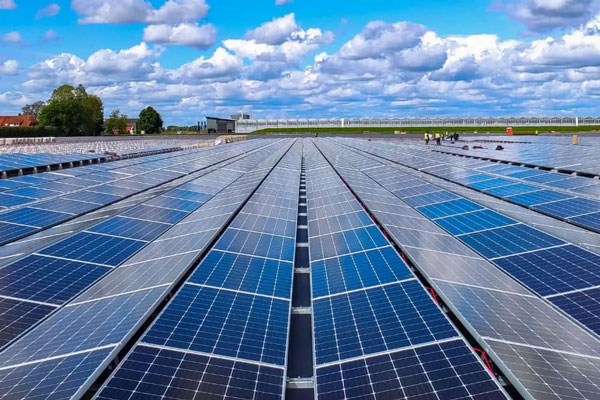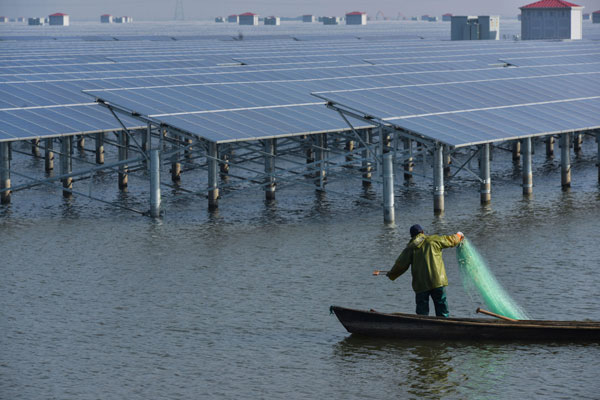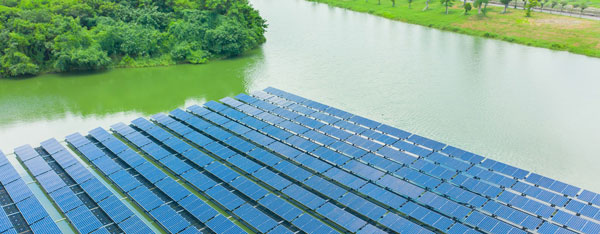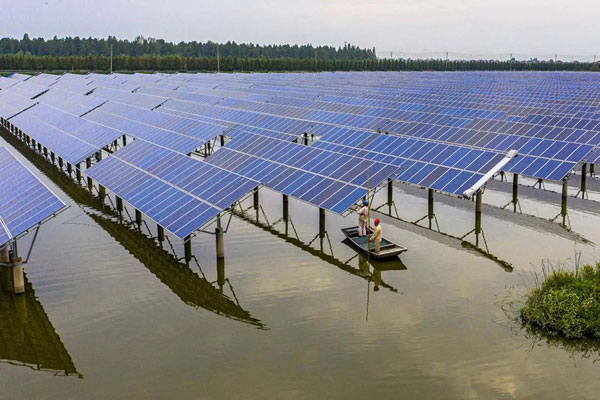Increasing Solar Panel Efficiency
Materials Science
Solar energy production has seen its efficiency greatly enhanced through modern advancements in material science. For example, the use of multi-junction solar cells that make use of a broader range of all spectrums of sunlight in laboratories has raised the bar to 47.1% efficiency. These cells are made with different types of semiconductor materials that can capture light from different regions. Real-world applications of the use of these materials have become more apparent, with perovskite cells promising an efficiency of above 25% today. One of the most recent applications of the perovskite cells has been at a solar farm in California which recorded higher output by 20% at the same given dimensions providing an advantage in space to efficiency ratio.

Technology-oriented manufacturing
Another major change that has contributed to the current modernization of the solar energy field is the introduction of technology in the manufacturing process. Automation and robotic technology has had the most impact in manufacturing processes including the use of an automated laser technology for cutting panels which reduce waste by 15% while reducing the throughput time by 30%. In addition, IBM has also integrated Linear Fresnel technology which reduces the cost of the panels even further, driving costs down and making the process more scalable.
Enhanced Energy Storage
Enhancements in the storage components following the improvement in efficiency are essential. Recent advancements in solid-state batteries have recorded an energy density of 70% higher than the traditional Lithium-Ion batteries. An analysis of this is evident in a new grid storage facility in Nevada that takes the excess power generated through solar energy during peak times to ease the peak spikes in the daylight hours.
Government Response
The response that governments have to these advancements is key in making their success or failure. An example is the recent US Department of Energy subsidy for the installation of high-efficiency solar panels. The subsidy in this case accounts for 30% of the cost of installation, driving the number of installations to an estimated two-fold in a period of 5 years. As such, it is evident that these technologies could not succeed without a governmental approach such as this incentivizing the sector through policies.
Solar Efficiency in the Desert
The utilization of these increases in efficiency and advancement of technology are more prominent when applied in the desert climates. Director of Technology for M+W Energy, Neil Germain, attributes a 40% increase in energy production at Arizona solar farms to the implementation of bifacial solar panels which collect sunlight from both sides and thus more effectively reflect sunlight from the ground.
Growing Adoption of Bifacial Solar Panels
Several leading solar companies have been shifting their focus to bifacial solar panels that can now be seen on the roof of a Lowe’s store in Yonkers. Bifacial solar panels produce energy on both sides, and the light reflects off snow and white soil, increasing the efficiency of the panels. They became more popular in 2024 and could produce up to 30% more energy than monofacial at the same conditions.
High Efficiency in Different Conditions
Specifically, they proved to be more efficient in regions with high albedo surfaces or sun-reflective materials, like snow or white gravel. Accordingly, the high albedo during wintertime helps to reflect the light on both sides of the bifacial solar panel because snow-covered ground reflects 85% to 90% of the sun’s energy. In the case of a solar park in Colorado, its energy output increased by 25% during the wintertime, exclusively due to the snow on the ground reflecting the light and increasing the efficiency of the panels.
Cost-Effectiveness
The most apparent benefit of the bifacial solar panels is their preservation of higher efficiency in the long term. Their Levelized Cost of Energy could be decreased by 16% over 25 years, primarily due to the higher efficiency and a slower degradation due to the lower excess temperature, compared to standard 72-cell monofacial glass. Despite a slightly higher initial cost, they have been gaining popularity due to their energy efficiency and longevity.
Combination with Tracking Systems
However, the use of bifacial panels in combination with single-axis tracking can result in up to 35% gain in annual energy production. Regarding this, a solar farm in Texas uses row-type trackers to adjust the tilt of each series of panels to ensure they are perpendicular to the east and west sun. In this way, the bifacial panels can capture both the direct and reflected light throughout the whole day.
Global Market Trends
Switzerland-based researchers found that the bifacial solar panels could bring increased energy yields of up to 20% in Australian farms, due to the predominance of sand-based soil. Japan increasingly favored bifacial panels in 2014, with the higher efficiency in snow cover, and China announced the first 100 people solar park farm with bifacial panels. The UAE-based Emirates With And Power are currently installing 332 860-watt bifacial modules in one of the largest in the world solar parks.
Urban Solutions
Singapore is a unique example of an innovative approach to power generation because of its urban conditions. A high-rise building in Singapore has a vertical solar facade, or BIPV, which doubles as sunshading and produces power. It is composed of both monofacial solar panels on horizontal ledges providing solar shading and bifacial panels in the central core. The latter can generate electricity both for the building and contribute to the overall grid.
Rising Utilization of Building-Integrated Photovoltaics
Building-integrated photovoltaics are the present and the future of modern architecture, offering not only an eco-friendly energy source but also an aesthetically pleasing construction integration. By 2024, BIPV has become not simply an alternative but a must for any urban development plan that wishes to decrease the carbon footprint and increase energy independence. Here, we discuss this tendency in terms of architectural aesthetics, new materials, government regulations, and application in the urban ecosystem.
Building Integration and Aesthetics
The BIPV systems become increasingly popular among architects who want to keep the visual impact of the construction while making it more energy-conscious. For example, a new commercial complex in New York now features photovoltaic glass on the whole of its façade. The new construction not only provides the necessary energy to satisfy half of its needs but also becomes one of the most beautiful and unique buildings in the city.
Material Price Decrease
In the last five years, the materials’ costs have reduced by nearly 20% due to the technological advancements in the photovoltaics industry and large-scale production of the necessary building materials. For example, thin-film solar cells that are more available and flexible than their silicon-based analogues can now cover the roof tiles. The production of solar windows has also become more affordable for the industry.
Government Regulation and Incentives
Government decisions are the key factor affecting BIPV expansion. In Germany, new regulations enforces commercial buildings to have a renewable smaller-scale power source as a part of the construction. During the past year, the BIPV installations in Germany have increased by nearly 30%. In the US, BIPV installations can offer a 25% tax return for the businesses or households, thus increasing their popularity. More countries around the world now have sustainability programs in which the BIPV are integrated – for example, Singapore is currently retrofitting old buildings and homes with photovoltaic elements that are supposed to decrease the urban heat island effect and produce energy for thousands of homes.
Real-Life Example
Another real-life application of BIPV is the so-called solar schools programs, in which the educational institutions invest in solar BIPV in order to reduce utility costs. For example, a California high school now has a brand-new photovoltaic-based roof that covers the whole of its area and provides energy for the whole school. Thousands of energy-producing solar tiles can even cover the schools additional lighting and music programs, and the school is planning to open an environmental science program that will be fully experiencing the practical energy use of the construction.
Expansion of Solar Energy Storage Solutions
Currently, the scalabilitask of solar power relies more and more on developments in energy storage solutions. As the generation capacity of the sun increases, the need for efficient and affordable storage systems to manage the balance of supply and demand increases throughout the day and at night.
Developments in Battery Technology
In recent years, advances in the development of lithium ion batteries have made an impressive breakthrough in reducing costs and extending uptime. A new generation battery design has been introduced by a company starting in 2024 with a silicon-based metal anode: its energy intensity is 40% greater than traditional lithium-ion batteries, and manufacturing costs have been reduced by 30 percent. This development has made it much easier and cheaper to provide solar storage facility.
Growth of Utility-Scale Storage Projects
It is worth noting the increase in utility-scale sun storage projects, with storage systems now regularly exceeding 100 megawatts. In Arizona, for example, there is a 150-megawatt storage site that can be used to power over 50,000 homes for up to four hours during an extended peak evening-time-block, helping to stabilize the grid at high-demand times.
Integration with the Smart Grid
Another important feature is the integration with the smartgrid. For example, in California, Pacific Gas and Electric has implemented a pilot project for the use of smartgrid technology: AI-driven software automatically manages the energy flow from the solar panels to the batteries and finally to the grid, increasing efficiency by 20%, the company estimates, by correcting the energy deficit when it is most needed.
Effect of Policy and Market Incentives
An important figure is the impact of government incentives on the increase in solar energy storage. The European Union, for example, has recently introduced a subsidy from 2024 that covers up to 30% of the cost of new solar storage systems. The availability of this hss led quickly to an explosive growth in new installations in the union: by 2025, it is predicted the volume of sun storage capacity will have increased by 50%..
Case Study
In Sweden, a program for the provision of residential solar and storage has s to an impressive increase in the number of completely stable homes. A recent survey found that 60 percent of households that participated in the program were able to rn net zerohomes, that is, they produced enough solar energy and could store it toxide their total energy demand for an entire year.

Proliferation of Smart Solar Systems
Smart technology is integrated into solar energy systems, affecting the way power is produced, interacted with the grid, and used. It results in an improved efficiency and greater dynamism in managing and consumption of solar energy energy.
AI-Driven Efficiency Improvement
As of now, one of the most efficient ways of optimizing solar energy production is the deployment of artificial intelligence. For example, in Florida, smart solar power systems equipped with AI algorithms managed to produce 25% more energy than its “dumb” counterparts. The technology allows the panels to adjust their angles constantly based on the amount of sunlight available, while the system analyses data about the weather to predict and change the solar panel’s configuration depending on the cloudiness of the day.
Direct Interaction and Management by a Customer
Another way the technology is useful is the management of energy in real-time. In California, the developers created a software platform allowing a homeowner or a business to constantly manage the amount and the source of energy used, which includes solar panels, batteries, and the grid to optimize costs and the consumption of solar and renewable energy. The technology helped to reduce electricity bills by 40%.
Allegation with Home Automation Systems
Home automation systems are also sufficiently advanced for a direct integration with solar power systems, which became mainstream as smart technology continued developing. In Texas, for instance, a system manages the generation of solar energy and the use of smart thermostats, lightning, and appliances. The household uses solar energy during the day-based on the schedule of its generation, resulting in more efficient use and correspondingly less waste.
Connectivity and Data
Another crucial aspect of smart solar power systems is connectivity and the ability to collect and analyze data. For example, in Germany, smart solar systems are connected into a single decentralized unit, and the data produced by this system is analyzed to manage energy supply and predict and manage peak power demands for each region. The development of a smart solar system allowed a large manufacturing facility in Japan to cut its reliance on external power and electricity bills by 30%.



